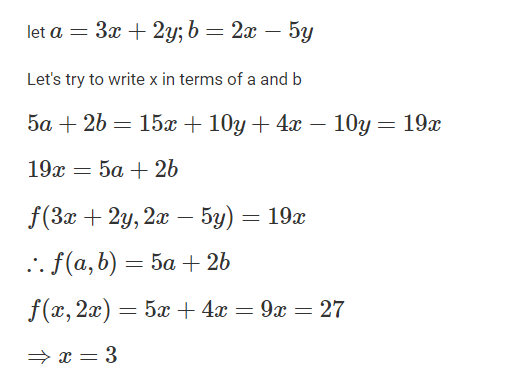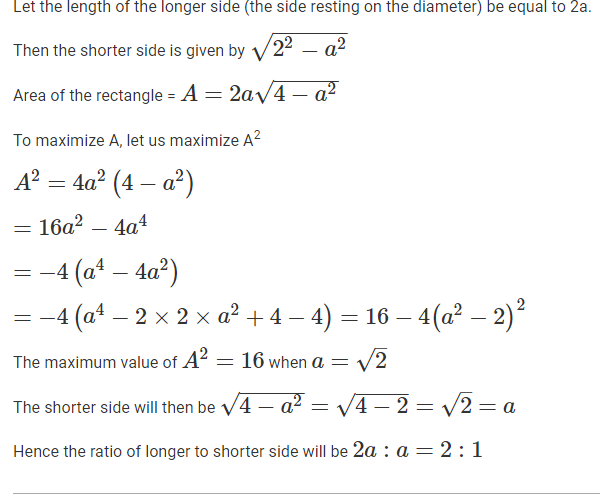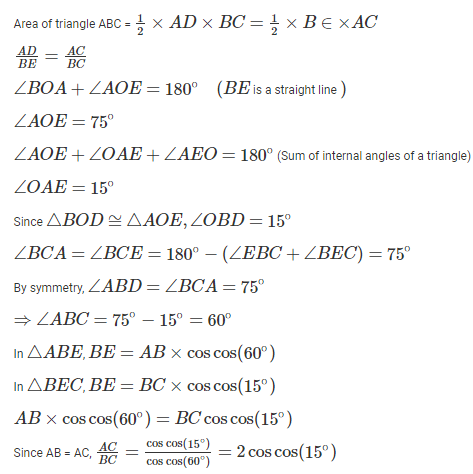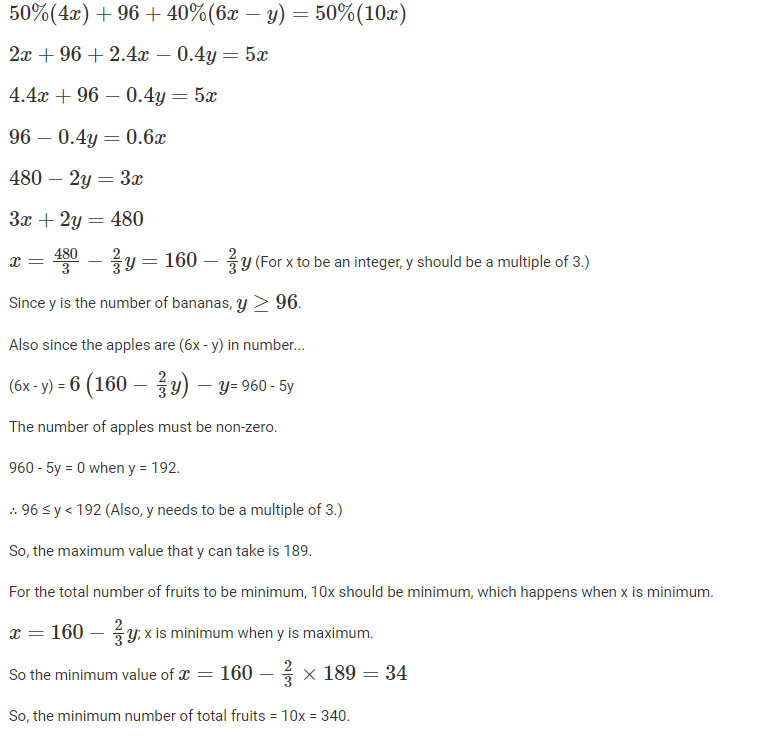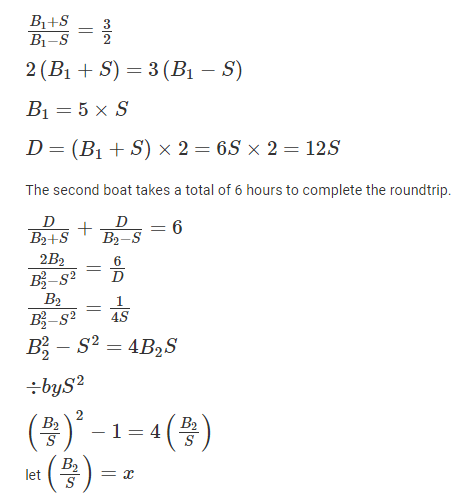Live Updates
• CATKing has launched new chat bot.

• New video on Logs has been released.
13.2K
Learners
asked the doubt

Previous Year Questions
A rectangle with the largest possible area is drawn inside a semicircle of radius 2cm . Then, the ratio of the lengths of the largest to the smallest side of this rectangle is
Video Explanation

A boat takes 2 hours to travel downstream a river from port A to port B, and 3 hours to return to port A. Another boat takes a total of 6 hours to travel from port B to port A and return to port B. If the speeds of the boats and the river are constant, then the time, in hours, taken by the slower boat to travel from port A to port B is
Video Explanation

Previous year papers
2024
2023
2022
2021
2020
2019
2018


